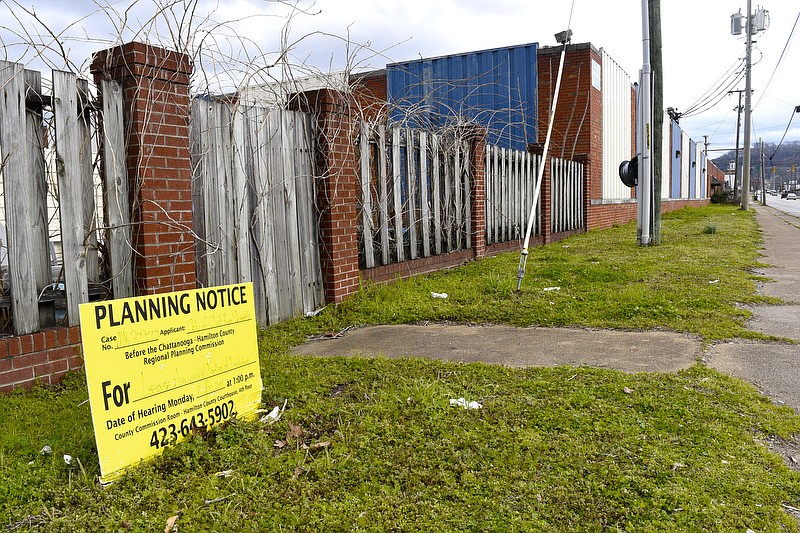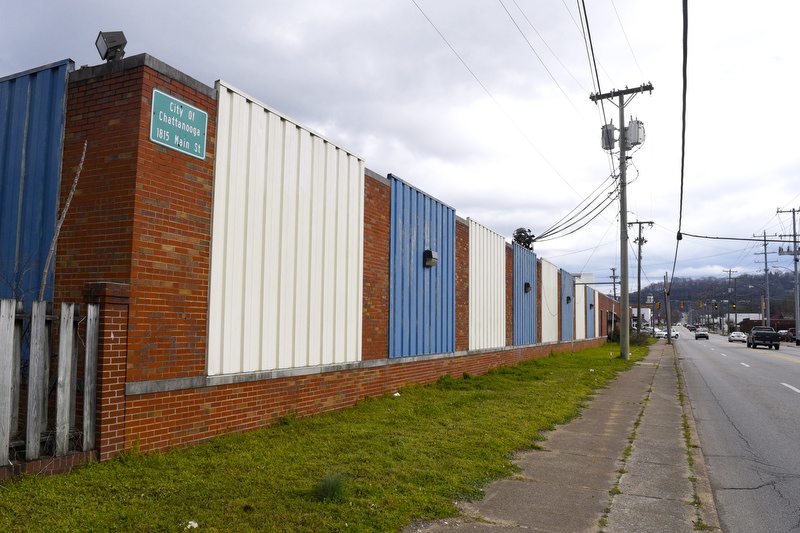Read part two of this series on low-income housing in Chattanooga here.
On a Thursday night in February, a couple dozen community members gathered in an East Chattanooga home to discuss the fate of their neighbors without one.
This meeting of Ferger Place homeowners was called to discuss a proposed development about half a mile away on East Main Street that would create 60 affordable housing units, 15 of which would be earmarked for qualified low-income tenants struggling with mental health issues.
With few exceptions, the community members present were local homeowners, almost all white, concerned about the impact the development would have on their property values and what kind of people it would bring to the neighborhood.
"The first thing is the building is out of context for the neighborhood, it's all single family," homeowner John Paque said. "And then what happens with the psychological effect of bringing 60 low-income, poverty-stricken people into the neighborhood - you are absolutely stifling the [neighborhood's] potential."
Paque, echoing concerns brought up by others in the room, told city representatives at the meeting that the project's target demographic would stunt the neighborhood's growth.
Specifically, he worried that the up-and-coming neighborhood would slide back toward its history of poverty if more low-income people were brought into the community.
"Why do you have to bring low-income, homeless people into a neighborhood that's been working so hard to bring itself up?" he asked, getting verbal support from fellow homeowners. "That's their problem. Everybody here has worked very, very hard to get an education and move up the ladder."
This "not in my back yard" attitude toward low-income housing is common, but not really based in fact, according to Tyler Yount, director of special projects for the city of Chattanooga.
"There's really not data that suggests that adding affordable housing hurts a neighborhood or its property values. When you look at what this project really is, it's a $12 million investment and it's potentially getting people off of the streets. That seems like a plus to any neighborhood," Yount said after the meeting. "We've seen it before where people have some idea of what income-restricted housing or the people who live there look like, and they react out of fear."
THE DEVELOPMENT
The property in question, 1815 East Main St., is, according to the city, an unmarketable brownfield that costs $60,000 a year to maintain, though the building is nearly uninhabitable and the property itself is ecologically undevelopable.
"We can't sell the property because no developer can take on the risk of the environmental issues on the property," Yount explained at the meeting, before being interrupted by angry homeowners offering to buy the property to prevent the development.
"The second thing is that our city-owned properties are very, very limited," he continued. "And in order to build affordable units like this, we have to use our city assets. If this doesn't happen, then we just won't have affordable housing units at all for the project."
Through the proposed partnership hatched by the AIM Center, a local nonprofit organization that focuses on housing for adults facing mental health illnesses, and Missouri-based supportive housing developer Vecino Group, which has experience with similar developments across the country, the city would donate the property in question, ridding it of the cost of maintaining it and creating 60 new housing units at no additional cost to the city.
"Vecino Group is prepared and equipped to work with [the Tennessee Department of Ecological Conservation] and fix the property before developing in a way other builders can't or won't," Yount said. "Vecino does this work themselves and seeks to find this kind of city property for all of their supportive developments, so it's in their business model in a unique way."
Still, a majority of the homeowners were not impressed with the proposal, many arguing that a gas station that once tried to purchase the property would be better for the neighborhood.
"It would be better for property values than bringing these people in," one resident shouted.
THE WEIGHT OF THE STIGMA
As Yount mentioned, this is not the first example of Chattanoogans pushing back against low-income housing initiatives.
"Some people just have a fundamental belief about people in poverty that's different than ours. Working in the city, housing is one of our main things, and we hear a lot of these kinds of concerns when projects are introduced into neighborhoods," Yount said. "We've seen projects not make it because of community feedback."
A recent example was a push in 2018 by the Transition House, a counseling and psychiatric facility at the corner of East M.L. King Boulevard and Central Avenue, to rezone and become a residential facility and sort of a halfway house for up to 50 people in need in downtown Chattanooga.
"They got tons and tons of pushback from the MLK neighborhood association and the Fort Wood neighborhood association about safety," Yount recalled. "It ended up not happening because there were so many neighbors so vehemently opposed to this rezoning."
After negative public comments at council meetings, the especially negative response from most of the participants of the Ferger Place meeting, and the notably less harsh but still negative response from people at a similar meeting in Highland Park, the city is working hard at outreach to dismantle some of the perception around the current project and, hopefully, usher it through the city council.
"Things are moving in a positive direction with this, but we still have a long way to go," Yount said. "We're going to continue to talk to the neighborhoods more about it and continue to do a little more education on what affordable housing really means to them, I think. But I think if we include these neighbors in the dialogue as much as possible, we'll be able to get enough support to move forward."
But even if the neighbors can come around to affordable housing, there's still the stigma around the potential tenants.
"For [the city] to stand there and say we're going to bring in all of these poor people who don't have a job, don't have a work ethic is going to be a drain on the community," Paque added toward the end of the heated meeting at which other home owners called the potential tenants "transient," "unknown," and "potentially dangerous," among other things.
In the final public comment of the meeting, Kale Sartor, a formerly homeless resident of another AIM Center property, shared her story of seeking affordable housing while battling mental illness, asking the homeowners to reconsider their perception of low-income housing tenants.
Part two of this story will run Monday, March 2, 2020.
Contact Sarah Grace Taylor at staylor@timesfreepress.com or 423-757-6416. Follow her on Twitter @sarahgtaylor.

